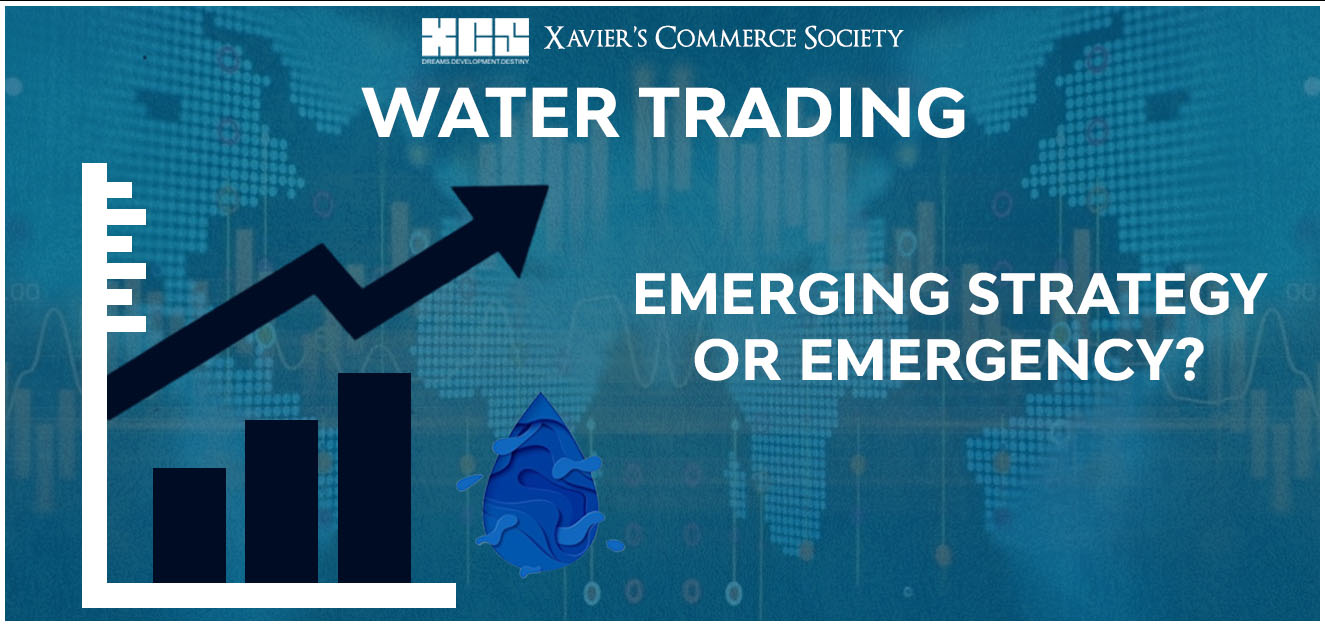


In the contemporary scenario, we observe that water, also termed as the “driving force of all nature”, is depleting at an alarming rate. Analysts predict that nearly two-third of the world will face water scarcity by the year 2025. Even though supply-side infrastructures like reservoirs and canals have proved to be effectual to a certain degree, the increasing paucity of water has impelled various entities to identify alternative sources of water. Water trading, a relatively novel concept, is now emerging as a constructive tool to alleviate water scarcity, restore ecological balance and build the foundations of a remarkable, cogent marketplace.
Water trading is the process of buying, selling, or leasing water access entitlements or water rights. Water rights are those intangible assets that regulate the use of water from a specified source by public and private landowners. There are two types of water trade: Permanent trade, where the seller surrenders all rights to the water entitlement; and Temporary trade, where water allocation made to an entitlement is sold for a stipulated period, or when only the water contained in the water account is sold. The factors governing investments in the water market include determining the megalitres of water required, nature of temporary or permanent ownership, location of water entitlement, and the price at which water entitlements are available.
Viewing the rise in population, changes in agriculture, insufficient water supply, drastic climatic changes, and inadequate water rights regimes, various initiatives like water trading come to the limelight to ensure effective allocation of water. This takes place in the form of transferring water rights from a holder possessing an abundance of water to entities that require water for facilitating business activities, meeting organizational objectives, and changes in the environment and other external factors. Water-dependent industries such as the beverage industry, textile and garment, and so on can lucratively and optimally establish themselves in regions where unallocated water is unavailable. Such a form of trading can additionally expedite savings in costs and offer substantial technological flexibility. It also provides ancillary environmental benefits like habitat, flood retention, and riparian improvement.
Water trading practices have been adopted significantly in Australia, the United States of America, South Africa, Britain, Oman, and the Canary Islands. The Murray-Darling Basin in Australia is the largest water trading system in the world. Also considered a ‘home’ to millions of Australians, it produces $22 billion worth of food and fiber annually and facilitates the trading of permanent and temporary licenses across state borders extensively. The Basin plans, which are long-term plans that ascertain the portion of water to be utilized every year, have gone the extra mile by bringing about ecological balance and health of the native areas, vegetation, river and floodplains (including the River red gum forests), fish spawning and movement, and bird-breeding events.
The Colorado-Big Thomson Project, which is the most vital water market in the USA, has recorded more than 2,000 water transactions in the past 20 years. It transfers water east across the Rocky Mountains and supplies it to 30 cities and towns.
Aflag irrigation, a UNESCO world heritage site in Oman, has been in operation since 2500 BC, and the tradable water rights among farmers have successfully sustained the agricultural irrigation systems for more than 4,500 years.
Despite its virtues, developing countries like India and Chile have faced various regulatory inefficiencies and malpractices in this sphere. The Water Regulation Authority of India anticipates water trading as a “minefield to development” as, commercial commodification of water may affect agriculture and industry, and in turn, our general lifestyle. Massive water conflicts may also lead to interstate rivalry, and the deregulated system may result in excessive red tapesim and a hindrance to unerring decision-making. Chile’s free market water scheme has attested to be extremely stringent for government intervention, and the 1981 Water Codes have failed to coordinate water use and resolve water conflicts. In order to combat proliferated private speculation, hoarding, and monopoly over water rights, the Chilean government introduced tangential reforms in 2005, to avoid further speculations, but it was unable to protect the rights of the indigenous communities. Indigenous communities like Atacameño, de Aymara, and the Quechua have not been able to still retain a significant portion of their original provisions due to lack of legal awareness and inflexible laws. Consequently, these communities failed to secure a major proportion of their original provisions, leading to cultural and productive losses.
However, the fact that water trading is a riveting concept in the sphere of environment conservation and sustainable development cannot be ignored. Will its augmentation actually stimulate optimum water allocation and boost agriculture extensively? Or, will the deregulated market forces and unjust issuance of rights cause uprisings and further pollution, leading to wastage?